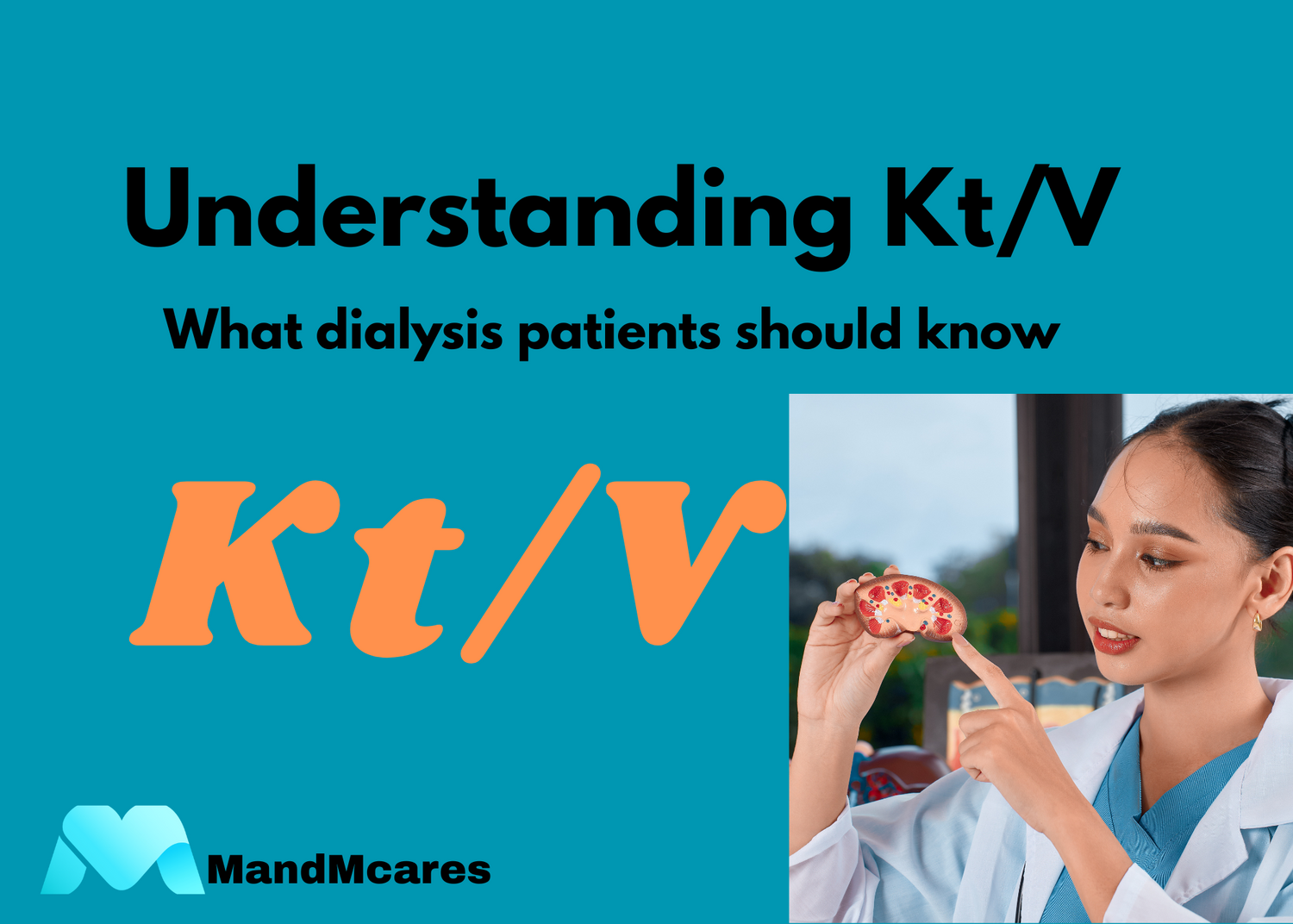Understanding Kt/V: What Dialysis Patients Should Know
If you’re on dialysis, chances are you’ve heard your care team talk about something called Kt/V. It might sound like a complicated formula, but understanding what Kt/V means—and why it matters—can help you stay informed and engaged in your treatment.
What Is Kt/V?
Kt/V is a way to measure how well your dialysis is working. Think of it like a “report card” that tells your doctor if your treatments are effectively removing waste from your body.
Here’s what the letters stand for:
-
K stands for clearance, which is how much blood your dialyzer (the dialysis filter) cleans each minute.
-
t stands for time, or how long your dialysis session lasts.
-
V stands for volume, which is the amount of fluid in your body that waste is being removed from (this is related to your total body water).
Put it all together, and Kt/V shows how much waste is being cleared compared to the size of your body. The higher your Kt/V, the more waste is being removed—which is a good thing.
Why Is Kt/V Important?
When your kidneys no longer work well, waste and toxins build up in your blood. Dialysis helps clean your blood, but the treatment needs to be strong enough and long enough to really make a difference. Kt/V is one of the main ways your doctor checks that you’re getting enough dialysis to stay as healthy as possible.
A Kt/V of 1.2 or higher is the usual target for people on dialysis, according to national guidelines. If your number is consistently below that, your doctor may recommend changes—like longer or more frequent treatments, or adjustments to your access or machine settings. Target Kt/V values can vary depending on your clinic’s guidelines.
What Affects Kt/V?
Several factors can influence your Kt/V:
-
Your treatment time – Longer sessions usually improve clearance.
-
Dialyzer efficiency – Some dialyzers clean blood faster than others.
-
Blood flow rate – Higher flow often means more waste is removed.
-
Access issues – If your access (fistula, graft, or catheter) isn’t working well, it could lower your Kt/V.
-
Body size – The larger your body water volume (V), the more dialysis you may need to meet the target.
What You Can Do as a Patient
Your Kt/V is not just a number—it reflects how well your treatment is working to keep you safe and feeling better. Here are a few ways to take an active role:
-
Don’t cut treatments short – Even a few minutes lost can lower your Kt/V.
-
Talk to your care team – If your Kt/V is low, ask what can be done to improve it.
-
Report any problems – If you’re feeling worse after treatment or notice issues with your access, speak up.
-
Keep track – Some dialysis centers will show you your Kt/V every month. It’s your right to know and ask questions.
Final Thoughts
Understanding your Kt/V helps you better understand your treatment. It’s not just a number on a chart—it’s a key sign of how well your dialysis is supporting your body. The goal isn’t just to hit the number, but to help you feel better, live longer, and stay strong through your journey.
Your care team is there to support you—so don’t hesitate to ask questions, speak up, and be involved. Because when it comes to your health, you are your strongest advocate.
MandMcares



0 comments